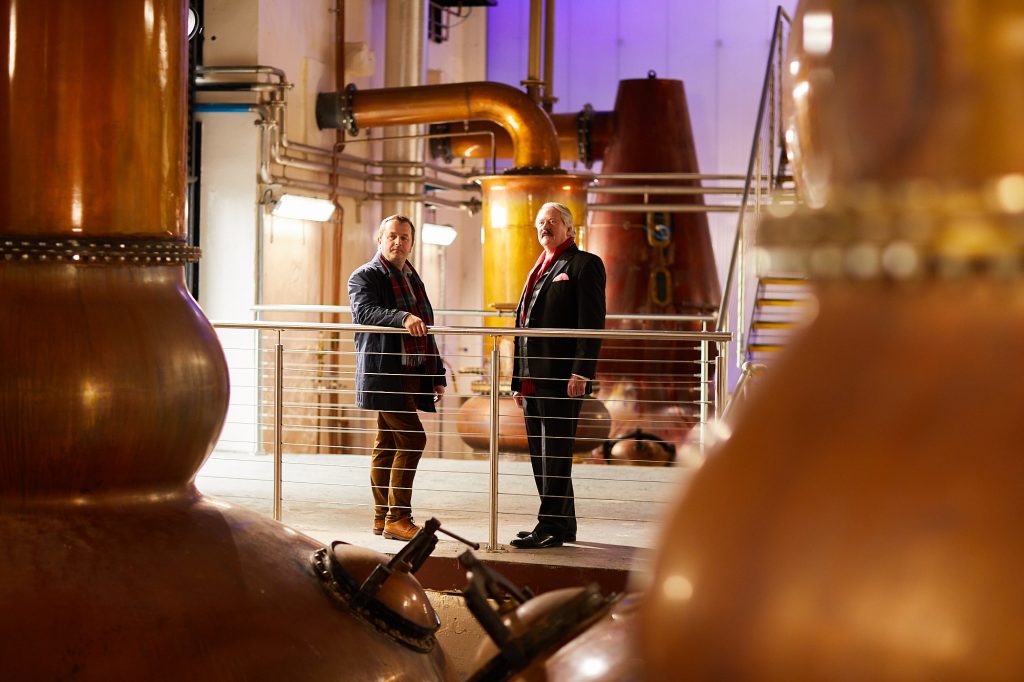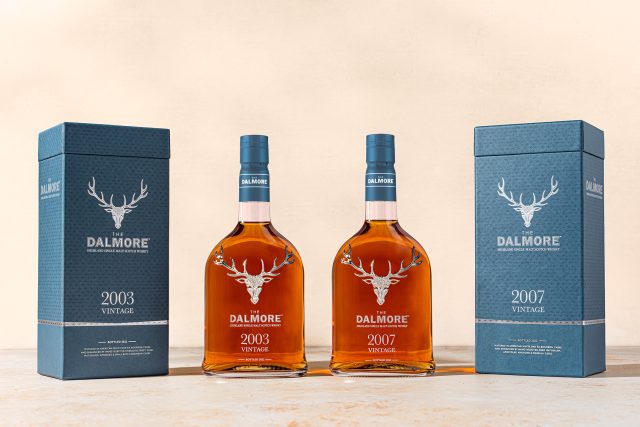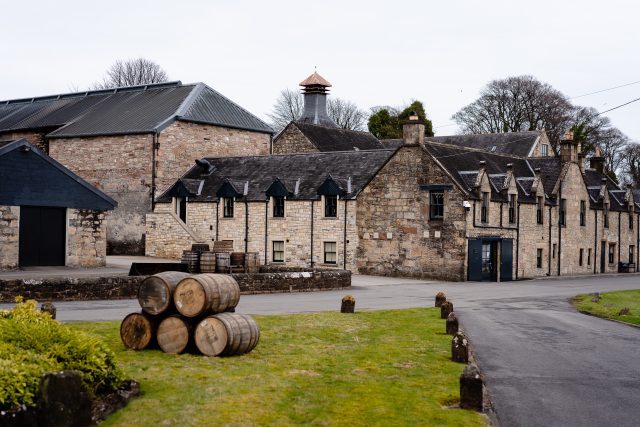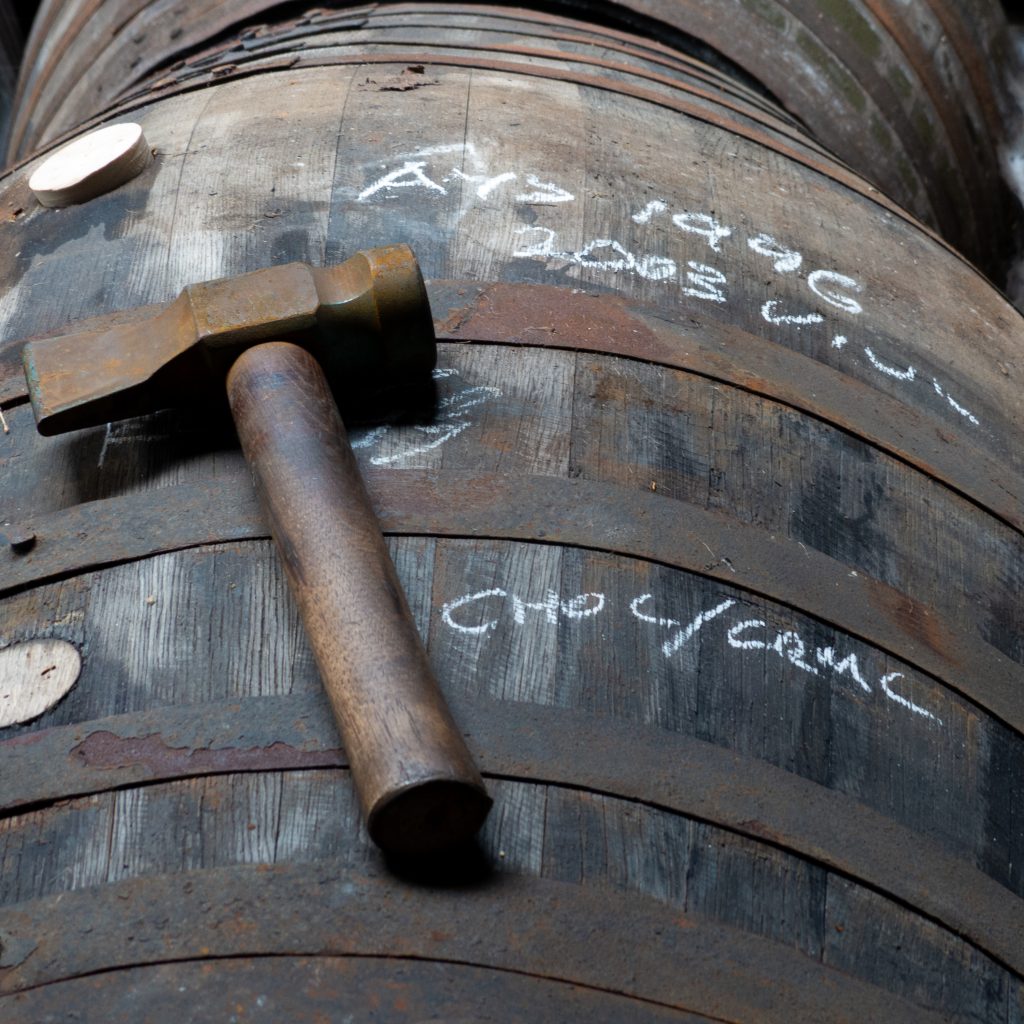This website uses cookies so that we can provide you with the best user experience possible. Cookie information is stored in your browser and performs functions such as recognising you when you return to our website and helping our team to understand which sections of the website you find most interesting and useful.
Dalmore plans exciting expansion ‘without sacrificing character’
There’s a whiff of change in the air at luxury-focused single malt Scotch whisky Dalmore: work is under way to double production capacity at the Highland distillery, shining a fresh light on its quirky and idiosyncratic distillation process. Richard Woodard reports.

When you visit a Scotch whisky distillery, your nose can tell you as much as your eyes and ears. Wander around Dalmore, on the northern shores of Scotland’s Cromarty Firth, and rich, malty scents fill the air, alongside dark, bosky fruits – organoleptic clues to the character of the spirit produced here.
Over the past decade or two, Dalmore’s ascent into the upper reaches of the luxury whisky market – only Macallan, arguably, outranks it in the eyes of the über-rich collectors of Asia and America – has been a story as much about the cask as the spirit that fills it.
Perhaps that’s not surprising, given that the whisky often spends decades in oak, and given the intricacy of the cask programme overseen by master distiller Richard Paterson OBE and master whisky maker Gregg Glass, involving longstanding relationships with suppliers including González Byass in Jerez, and Graham’s in the Douro. But the creation of Dalmore’s spirit is a tale worth telling too.
At first, all seems conventional: barley (currently Sassy), mostly sourced from across the water on the Black Isle; worts “on the bright side of cloudy”, according to distillery manager Mark Lancaster; a 50-hour fermentation. Not too light, not too heavy – a ‘Goldilocks’-like treading of a mid-line that creates all that rich fruit and malt.
But to walk into Dalmore’s still house is to experience a sensation akin to Alice vanishing down the rabbit hole. The wash stills appear to have been decapitated, with flat tops, while the necks of the spirit stills are muffled in clunky water coolers.
Even more bizarrely, the four newest stills (dating from the 1960s) are identical shapes to the others, but twice the size. The optical effect is head-scratchingly surreal – and the make-up of the stills rather complicates things for the operators.
“The flat tops give us reflux in our wash stills, which is not normal, but increases copper contact,” explains Lancaster. “The spirit stills with their water jackets increase reflux again.” Dalmore’s short, stumpy stills should produce a heavy spirit style, but the quirks introduce lightness into the mix.

The oddness continues outside, where all the condensers are conventional shell-and-tube, but those on the spirit stills are horizontal, rather than vertical – an apparent attempt to imitate old-style worm tubs, which normally add heft to the spirit.
If you were designing a whisky distillery from scratch, you wouldn’t do it this way. The different still sizes create a “massively unbalanced” system, says Lancaster, where operators have to constantly monitor the strength of the spirit coming off the stills, and the still temperatures, tweaking cut points in order to maintain a consistent flavour profile.
Therefore, at a time of increasing automation, Dalmore remains pretty hands-on. “We do keep the manual intervention as a key to keeping that consistency,” says Lancaster. “We could try to computerise it, but no computer is as good as the human eye. It’s a bit like a pipe organ – pianists can bang out a tune, but these guys are organists.”
Dalmore is now running flat out – in 2022, it produced a record 4.5m litres of pure alcohol (lpa) – but expanding without sacrificing character is tricky. The simplest option is the one that owner Whyte and Mackay is pursuing: the £40m doubling of production capacity via the construction of a new, twin still house on the site of Dalmore’s now demolished Saladin box maltings (out of use since the 1980s).

The new building, with panoramic views across the Cromarty Firth to the Black Isle, will have its own mash tun, wooden washbacks and four pairs of stills – just like the old distillery, in other words (although with more sustainable production methods). “We need to make sure as we build the new still house that we don’t compromise the style of the new make spirit,” explains Kieran Healey-Ryder, head of whisky discovery at Whyte and Mackay.
The first mash is scheduled for August 2024, with a new visitor centre likely to open towards the end of the year. Once the new plant is operational, the old distillery will shut down for about three months to upgrade it and make it more sustainable too. When both halves of the distillery are running – probably in the first quarter of 2025 – Dalmore will have a production capacity of 9m lpa. Apart from boosting spirit supply for the future, this may allow scope for a little experimentation – something that is out of the question currently thanks to the imbalance between supply and demand.
While the plans represent Dalmore’s future, the distillery warehouses are filled with its past. Here that fruity-malty spirit spends an initial period ageing in ex-Bourbon casks before being moved on – often more than once – into an array of Sherry, Port and wine casks. There’s also some young spirit maturing in virgin Scottish oak – a company-wide project overseen by Glass.
Every November, Paterson, Glass and Margaret ‘Mags’ Nicol spend a week assessing several hundred casks to see what’s interesting, what’s working – and what isn’t. “If we find something ‘sleepy’,” says Glass – the actual adjective employed is rather more robust – “then we might look to do something different with that.”

Paterson continues. “Sleepy,” he says, “that means it’s gone to sleep. It does need a new suit, a new dress, to wake it up a bit. But later we might go back and see it glowing. That’s the biggest reward of this job: something that we thought was not particularly good is now a diamond.”
Each cask is given a chalked star rating – “one to three, or maybe three-and-a-half,” says Glass – and a flavour descriptor: “blood orange”, “chocolate/orange”, “chocolate/caramel” and so on. “We might get inspired by a particular character with older casks,” says Glass. “It’s partly discovery. In November last year, it was chocolate orange – then we started almost looking out for it.”
The selection process earmarks liquid for Dalmore’s rare, prestige and vintage programmes. Last year, the latter resulted in two vintage releases – a 15-year-old from 2007 and an 18-year-old from 2003 – that are analogous vintage Champagnes: showing a distinctive character over and above the typical style of core Dalmore expressions of that age.
Last year’s unifying theme was “warm honey spice”, and the whiskies reveal a somewhat lighter, more elegant facet of Dalmore. The 2023 vintage releases, yet to be revealed, will play on that “chocolate orange” theme.
The casks remain a hugely important part of the Dalmore story, but expansion may help to shine a light on the creation of the liquid that is moulded and polished by the maturation process. “It’s a mix of complex processes,” says Lancaster. “What we’re aiming for is this new make character that’s fruit-led, but with the backbone and body to allow long maturation.”
“We have this spirit style at Dalmore,” adds Craig Swindell, Dalmore global specialist (aka international brand ambassador). “And that’s now what we’re very much beginning to talk about.”

